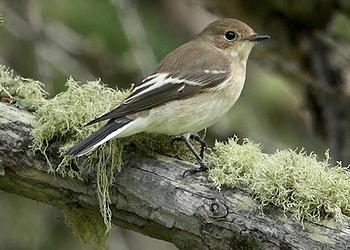
BERLIN, Germany, July 23, 2019 (ENS) – Climate change can threaten species and extinctions can impact ecosystem health, so it is of vital importance to assess how animals respond to changing environmental conditions, and whether these shifts enable the persistence of populations in the long run.
To answer these questions an international team of 64 researchers led by Viktoriia Radchuk, Alexandre Courtiol and Stephanie Kramer-Schadt from the Leibniz Institute for Zoo and Wildlife Research (Leibniz-IZW) evaluated more than 10,000 published scientific studies.

They concluded that although animals do commonly respond to climate change, for example by shifting the timing of breeding, such responses are in general insufficient to cope with the rapid pace of rising temperatures and sometimes go in wrong directions.
Their findings are published in the scientific journal “Nature Communications.”
Co-author Thomas Reed, a senior lecturer at University College Cork, Ireland, explains, “These results were obtained by comparing the observed response to climate change with the one expected if a population would be able to adjust their traits so to track the climate change perfectly.”
In wildlife, the most commonly observed response to climate change is an alteration in the timing of biological events such as hibernation, reproduction or migration.
Changes in body size, body mass or other morphological traits have also been associated with climate change, but, as confirmed by this study, show no systematic pattern.
The researchers extracted relevant information from the scientific literature to relate changes in climate over the years to possible changes in both types of traits.
Next, they evaluated whether observed trait changes were associated with higher survival or an increased number of offspring.

“Our research focused on birds because complete data on other groups were scarce,” says lead author Radchuk. “We demonstrate that in temperate regions, the rising temperatures are associated with the shift of the timing of biological events to earlier dates.”
Co-author Steven Beissinger, a professor at the University of California, Berkeley, said, “This suggests that species could stay in their warming habitat, as long as they change fast enough to cope with climate change.”
Senior author Alexandre Courtiol said, “This is unlikely to be the case because even populations undergoing adaptive change do so at a pace that does not guarantee their persistence.”
Even more worrisome is the fact that the data analyzed included predominantly common and abundant species such as the great tit, Parus major, the European pied flycatcher, Ficedula hypoleuca, or the common magpie, Pica pica, which are known to cope with climate change relatively well.
“Adaptive responses among rare or endangered species remain to be analyzed. We fear that the forecasts of population persistence for such species of conservation concern will be even more pessimistic,” concludes Stephanie Kramer-Schadt, who heads the Department of Ecological Dynamics at Leibniz-IZW.
The scientists hope that their analysis and the assembled datasets will stimulate research on the resilience of animal populations in the face of global change and contribute to a better predictive framework to assist future conservation management actions.
Copyright Environment News Service (ENS) 2019. All rights reserved.
© 2019, Environment News Service. All rights reserved. Content may be quoted only with proper attribution and a direct link to the original article. Full reproduction is prohibited.
